One of the most common questions for people considering cosmetic eyelid surgery is how long does blepharoplasty last? The answer depends on several factors.
Upper and lower eyelid surgeries with their various techniques are at the core of practice of a cosmetic oculofacial plastic surgeon. Oculoplastic or oculofacial plastic surgery is a medical specialty which requires training first in ophthalmology or eye surgery, followed by fellowship cosmetic surgery and reconstructive eyelid surgery.
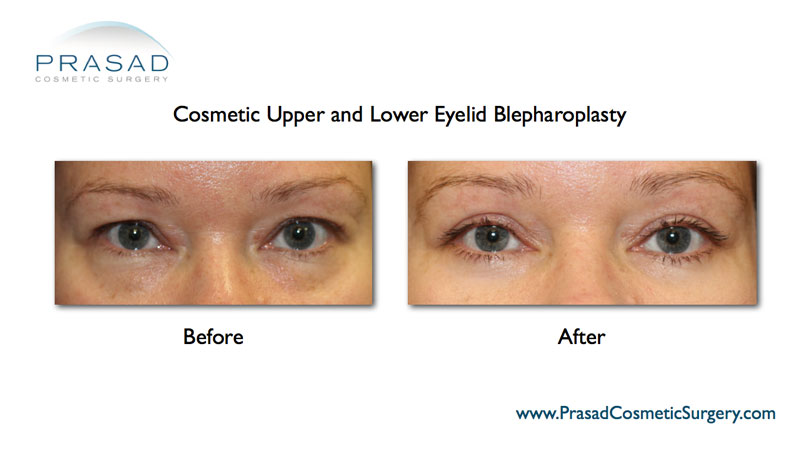
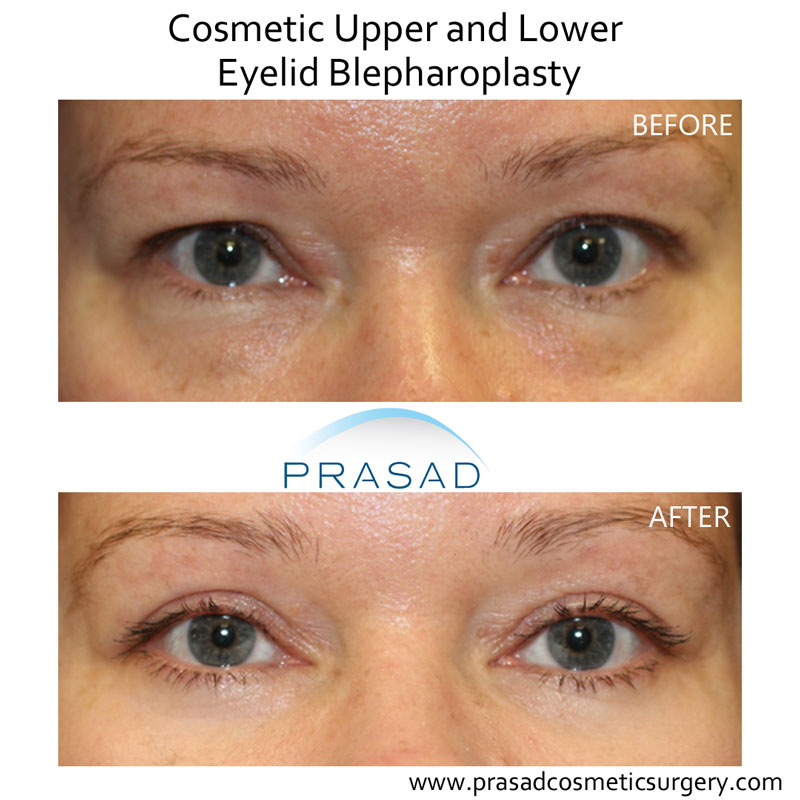
View more blepharoplasty before and after photos
Cosmetic eyelid surgery can be divided into procedures for the upper eyelids and procedures for the lower eyelids. For the upper eyelids, the most popular procedure is to address excess skin or redundant skin as well as excess fat referred to as upper eyelid blepharoplasty. For the lower eyelid surgery, the most popular procedure is under eye bag surgery to address under eye puffiness, skin wrinkling and discoloration.
Upper Eyelid Blepharoplasty
In cosmetic upper eyelid surgery, redundant skin, usually from genetics and the effects of aging is excised to relieve the hooded look and reveal the natural shape of the eyes. There are specialized procedures Dr. Amiya Prasad performs such as Asian eyelid surgery where a little skin, and fat are typically removed for incisional surgery or no skin is removed in non-incisional surgery.
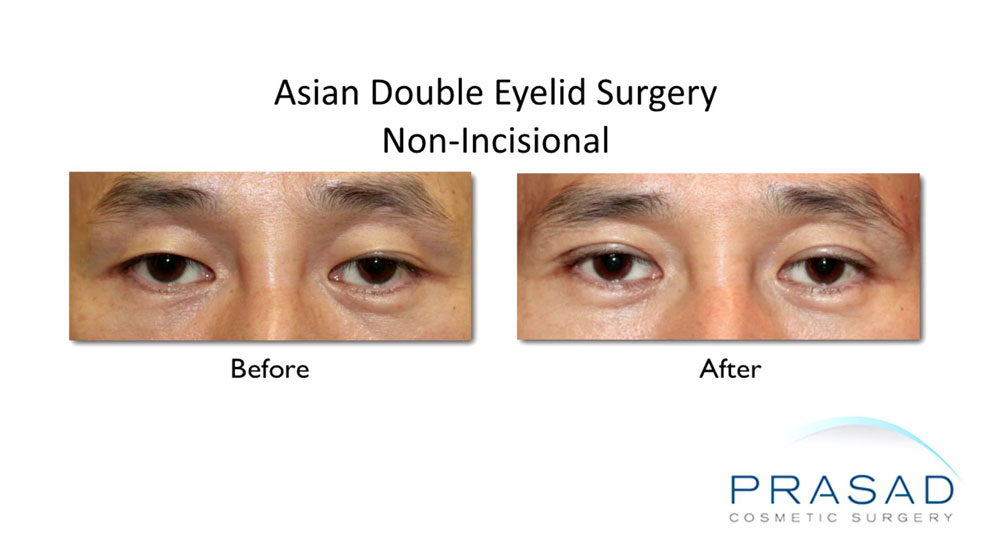
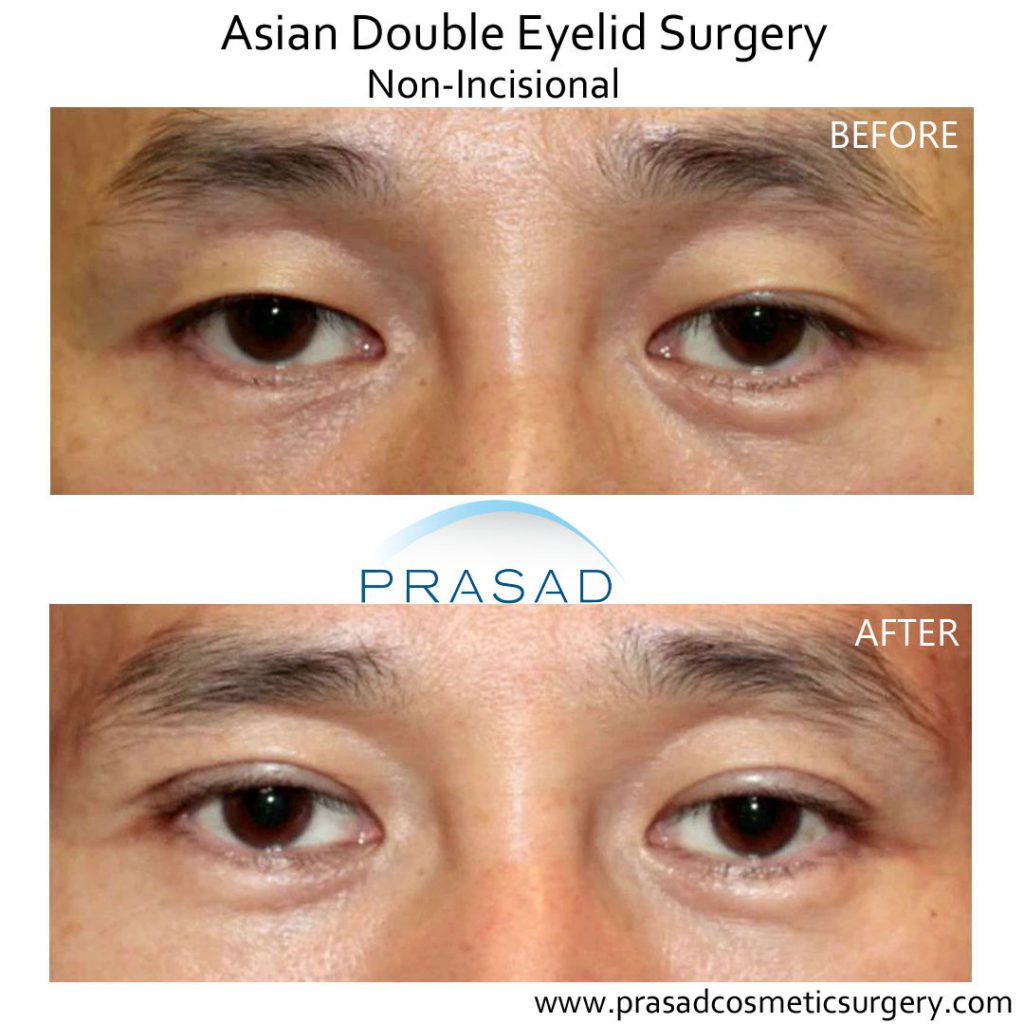
Lower Blepharoplasty Surgery
In terms of lower eyelid surgery, under eye bags are the main reasons people come for consultation. Under eye bags are caused by fat normally around the eyes pushing forward resulting in what’s referred to as fat herniation or lower eyelid fat prolapse. This condition can occur genetically as early as the teenage years and throughout your life with aging.
During consultation, Dr. Prasad speaks to his patients about the longevity of a procedure, and explains that specific fat pockets removed cannot come back. However, with aging, other fat pockets can also prolapse and affect the appearance later. As far as upper eyelid skin is concerned, it also explains how it takes many years for the skin to stretch. However, other changes occur such as the brows drooping which can contribute to the appearance of fullness over the eyes.
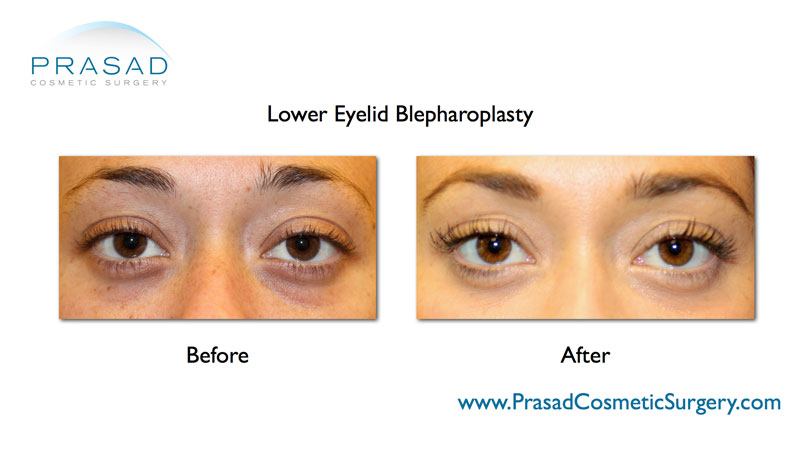
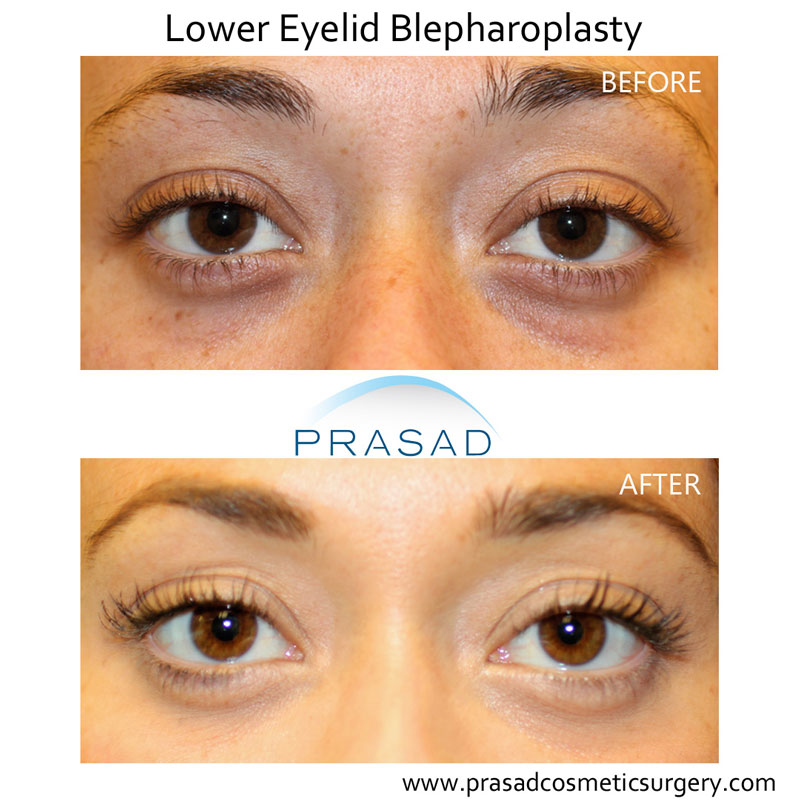
Blepharoplasty How Long Does it Last?
As a general principle, blepharoplasty results can last about 5-10 years. The effects of eyelid surgery can be affected by age at the time of surgery, the patient’s living environment, and personal lifestyle. For example, the longevity of the results of eyelid surgery for a 30-year-old who avoids excessive sun exposure, and is a non-smoker committed to a healthy lifestyle in comparison to a 60-year-old smoker who spends a lot of time in the sun.
Amiya Prasad, MD has been in practice for over 25 years and can attest to the stability of the results which on average exceeds 10 years as has been reported by patients who’ve come in more than 10 years after eyelid surgery for other procedures such as Structural Volumizing and/or a facelift. Similar principles apply to Asian double eyelid surgery.
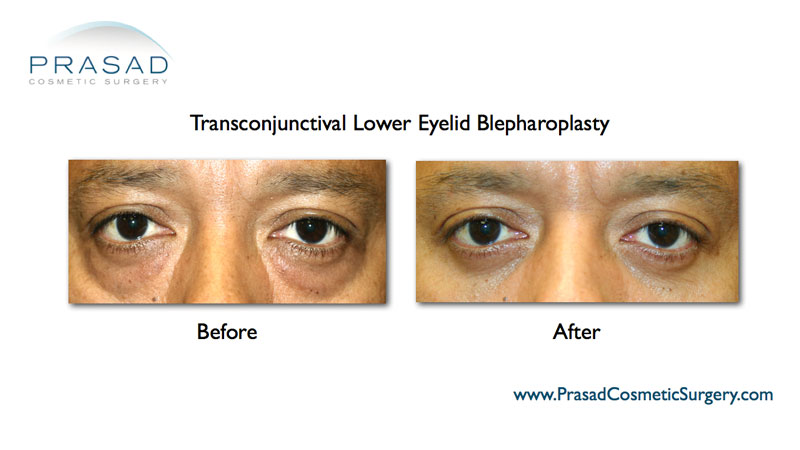
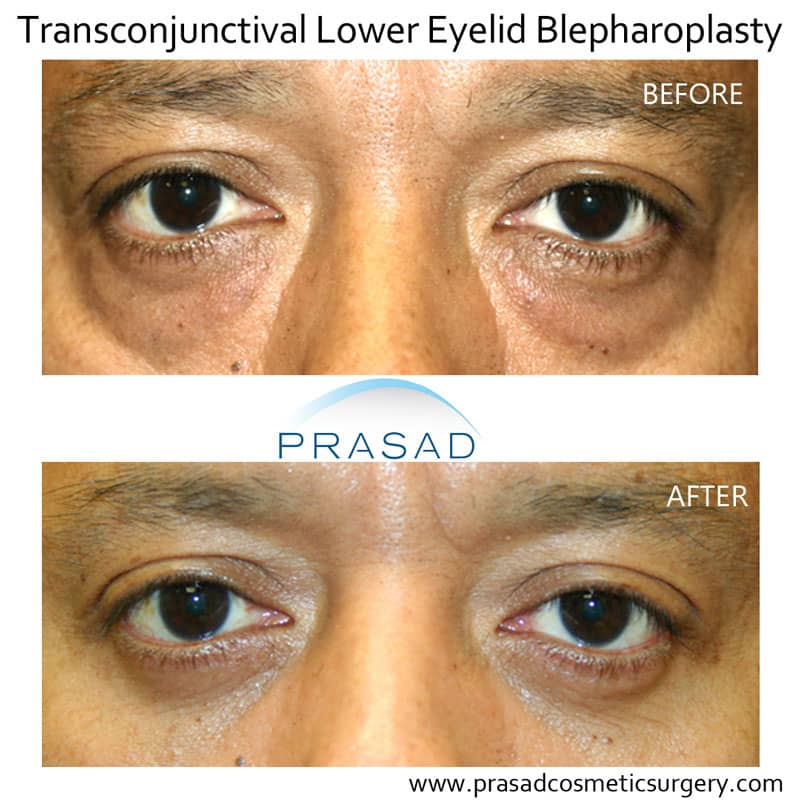
View more lower blepharoplasty before and after photos
Best Eye Cosmetic Surgeon
When it comes to eyelid surgery, technique and process of procedure and aftercare are critical to long term satisfaction. Dr. Amiya Prasad is an eyelid surgery specialist well known for performing revision eyelid surgery for less than optimal outcomes for patients who come to see him from around the world. He has developed strategies to allow patients to have their procedures performed more safely, comfortably, and with a faster blepharoplasty recovery process with minimal downtime.
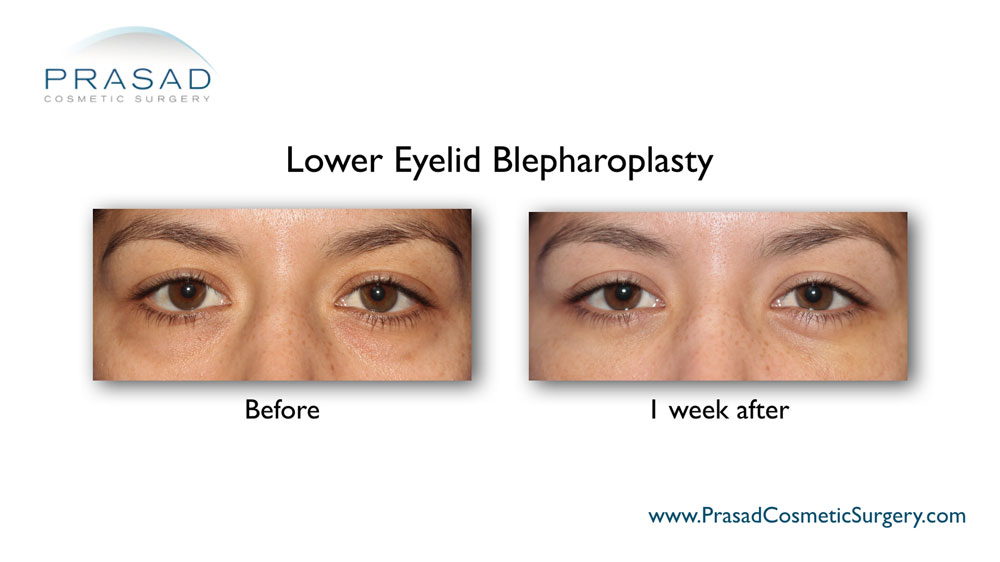
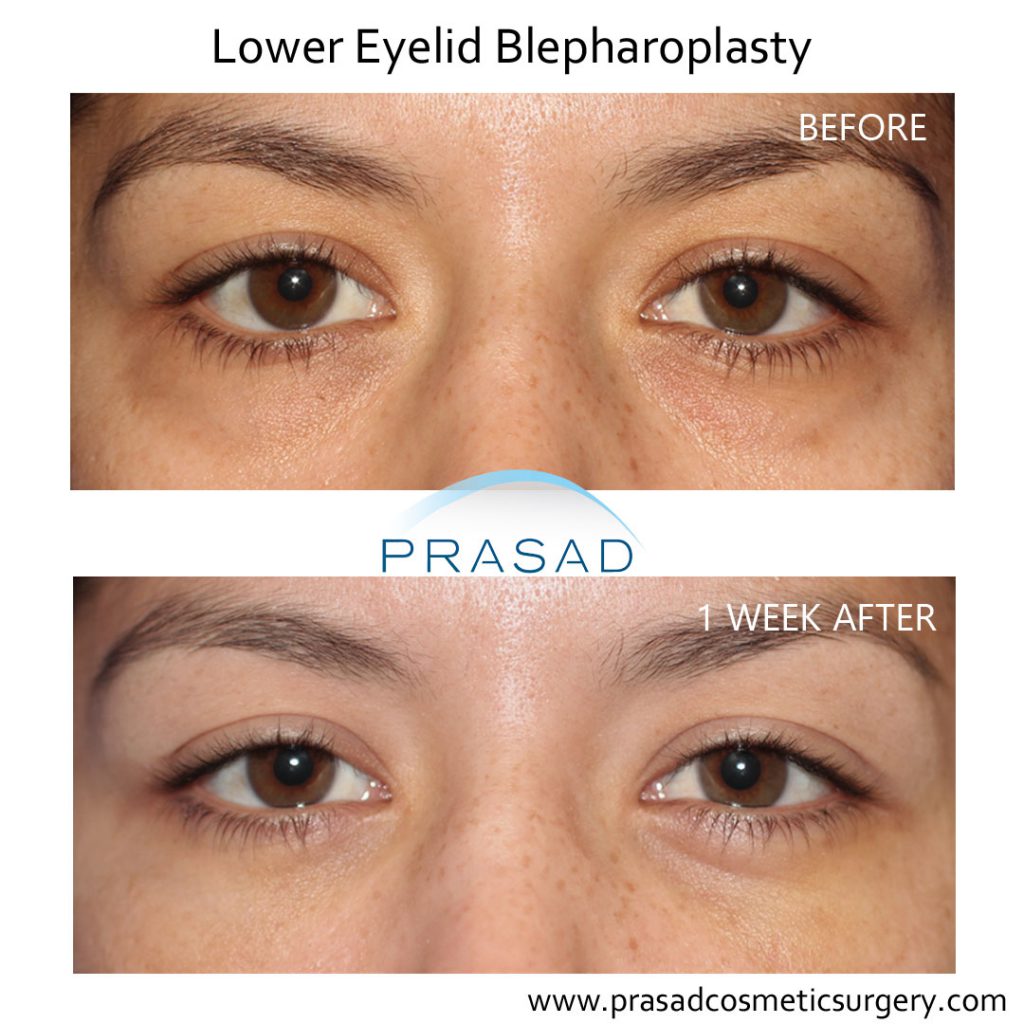
Dr. Prasad performs cosmetic eyelid surgery with local anesthesia with LITE IV sedation, or intravenous sedation, in contrast to many doctors who use general anesthesia. This approach significantly reduces the risks of systemic complications, as well as post-surgery nausea and vomiting seen frequently after general anesthesia. General anesthesia also prolongs recovery time from surgery, as recovery is needed from the effects of general anesthesia before more significant surgical healing.
In addition, Dr. Prasad frequently sees patients who had their lower eyelid surgery done elsewhere only a few years prior who are complaining about still looking tired, and having eye irritation. Typically this is the result of lower eyelid surgery performed from the outside with the incision below eyelashes. Skin is removed and the support of the lower eyelid is compromised resulting in lower eyelid retraction.
Correcting this problem requires advanced reconstructive techniques including establishing lower eyelid support, and grafting procedures if there are no other alternatives. In contrast, Dr. Prasad performs lower eyelid surgery with a technique called transconjunctival blepharoplasty. This addresses the fat pockets causing the under eye bags from the inside of the eyelid, which preserves the lower eyelid support structures.
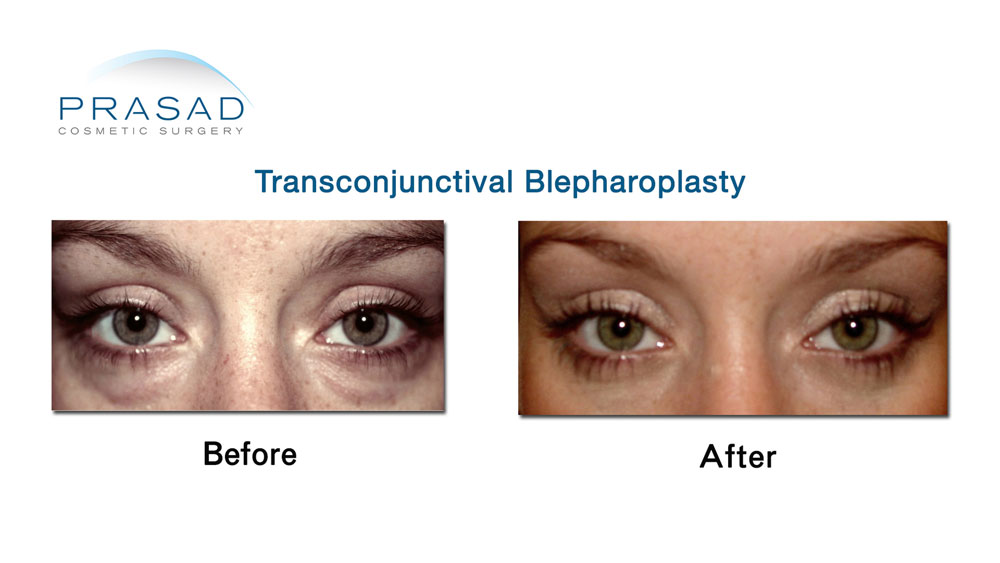
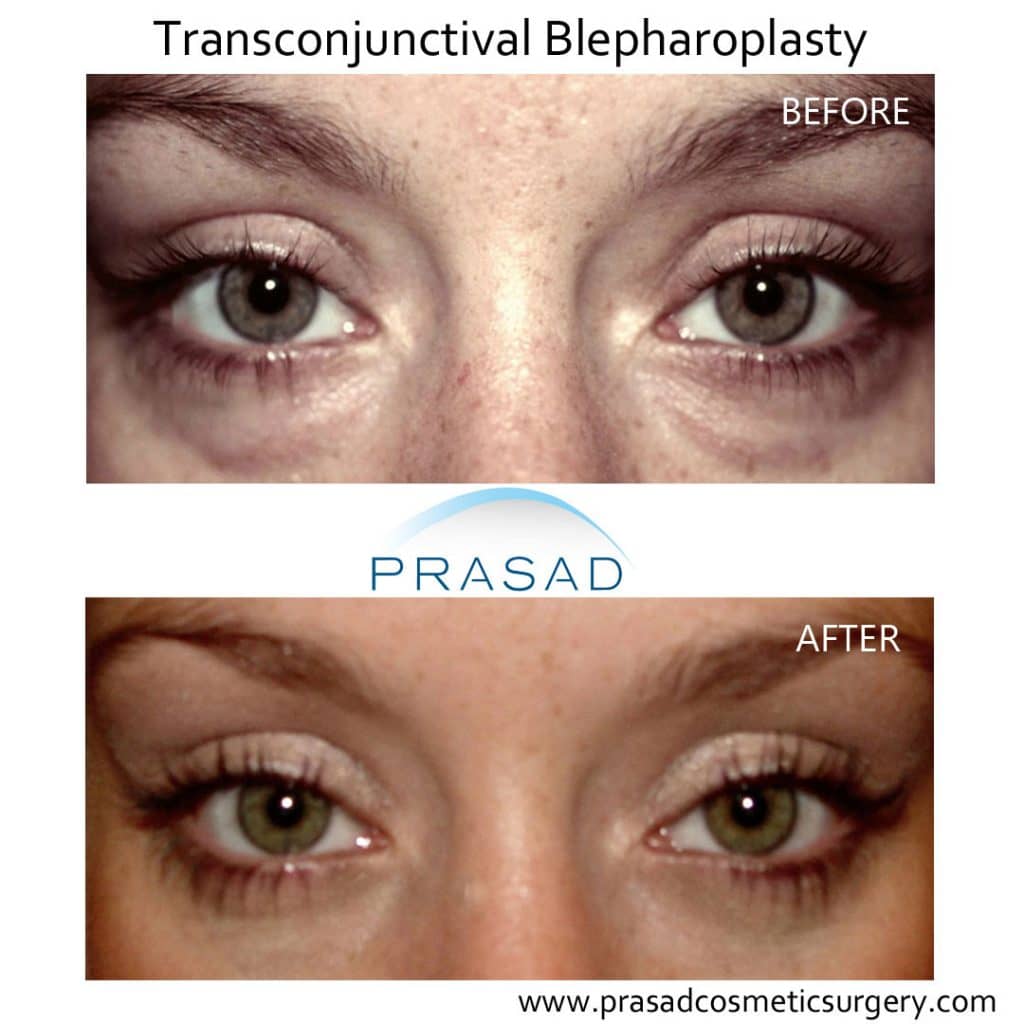
Most patients are happy with the outcomes and maintain the natural shape of their eyes. Ultimately, this contributes to the longevity of the procedure.
The results of upper or lower eyelid surgery can last for many years. Age and lifestyle are important variables when you think of how long these benefits will last. Eyelid surgery, like many cosmetic procedures, can take years off your appearance, while maintaining a natural look and preserving your unique facial character. Coupled with healthy lifestyle choices, as well as other less invasive procedures can help maximize the appearance of your eyelids for many years after surgery.
